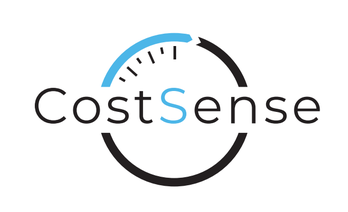Many business owners focus heavily on profitability, but even profitable businesses can struggle or fail without a steady cash flow. It’s not just about what’s on the balance sheet; it’s about liquidity.
What is the Difference Between Cash Flow and Profit?
A common misconception is that profit equals cash. However, profit is an accounting concept that reflects what remains after all expenses are deducted from revenue. Cash flow, in contrast, tracks the actual cash coming in and going out of the business. A business can be profitable on paper but still run out of cash if revenues are tied up in accounts receivable or inventory.
How Can Cash Flow Guide Decision-Making?
By analyzing cash flow, business owners can gain insights into the financial health of their business and make strategic choices that align with their long-term goals:
1. Managing Operational Expenses
A small marketing agency faces a cash flow shortage due to delayed client payments.
To manage the situation, they prioritize essential expenses like employee salaries, rent, and internet costs, which are critical for daily operations. Non-essential expenses, such as a planned software upgrade and a team outing, are postponed until cash flow improves.
Solution: By prioritizing essential expenses vs. non-essential expenses, businesses can ensure that their basic operational needs are met even during periods of low cash flow.
A small clothing boutique experiences a cash flow dip due to slower-than-expected sales during the off-season. To manage its cash flow better, the boutique reviews its inventory and procurement strategies. By analyzing cash flow projections, the owner decides to reduce inventory purchases for the upcoming month and orders only the best-selling items instead of a full range of new products. Additionally, the boutique negotiates with suppliers to extend payment terms from 30 to 45 days, aligning cash outflows with expected sales inflows. These adjustments allow the boutique to maintain sufficient cash for essential expenses like rent and payroll, while avoiding overstocking and freeing up cash tied in excess inventory.
Solution: Cash flow insights help businesses make smarter decisions about inventory management and procurement.
A graphic design agency experiences fluctuations in cash flow due to the project-based nature of its work. To prepare for potential downturns or unexpected expenses, the agency implements a strategy to build a contingency fund. By regularly analyzing cash flow, the agency identifies periods of surplus, such as after completing large projects or during high-revenue months. During these surplus periods, the agency sets aside a portion of its cash into a contingency fund instead of distributing it all as profit or reinvesting immediately. When a major client unexpectedly delays payment, causing a temporary cash shortfall, the agency uses its contingency fund to cover essential operational expenses like payroll and rent. This allows the agency to continue its operations smoothly without taking on debt or making drastic cuts to staff or other critical areas, showcasing the importance of foresight and disciplined cash flow management.
Solution: Regular cash flow analysis helps identify when surplus cash is available to be put into a reserve. This fund can then be used to cover operational expenses during challenging periods without resorting to external financing or drastic cost-cutting.
2. Investment and Financing Decisions
A manufacturing company notices through its cash flow forecast that it will have surplus cash
in the next quarter. Instead of keeping this cash idle, the company decides to invest in automating part of its production line, which will increase efficiency and reduce long-term costs. The projection also shows that to fully realize the automation project, an additional $100,000 will be needed beyond current cash reserves. Using this information, the company secures a short-term loan to cover the gap, enabling them to proceed with the investment without disrupting day-to-day operations.
Solution: Cash flow projections and forecasts provide valuable insights into how much money a business needs for growth initiatives and whether additional financing might be required.
3. Pricing and Sales Strategy
A custom furniture business is experiencing cash flow constraints due to delayed payments from several large clients. To accelerate cash inflows, the business analyzes its cash flow and decides to offer a 5% discount to customers who pay their invoices within 10 days, instead of the standard 30-day term. This early payment discount encourages quicker cash receipts, helping the business to bridge the cash gap and cover its immediate expenses like materials and wages. Conversely, during a period of healthy cash flow, the same business finds itself with a comfortable cash reserve. Leveraging this strong position, the business decides to offer extended credit terms to attract large commercial clients, allowing them 60-day payment terms instead of the standard 30 days.
Solution: For businesses facing cash flow constraints, offering early payment discounts or promotions can accelerate cash inflows. Conversely, businesses with healthy cash flow might use their position to extend credit terms, encouraging larger sales from key customers.
What Are the Long-Term Benefits of Strong Cash Flow Management?
1. Sustaining Growth and Expansion
A tech company with strong cash flow management decides to expand internationally. Because of its healthy cash reserves and accurate cash flow forecasting, the company can finance the expansion internally rather than relying heavily on external funding, reducing debt levels and maintaining control over the business.
Solution: With a clear understanding of cash flow, businesses can plan expansions strategically, ensuring they have the necessary funds to support growth without overextending themselves financially.
2. Enhancing Creditworthiness and Access to Financing
A construction company with a track record of strong cash flow management applies for a loan to finance a large project. The company’s consistent positive cash flow reassures the bank, resulting in a lower interest rate and better terms, saving the company thousands in financing costs over the loan’s duration.
Solution: Businesses with strong, positive cash flow are seen as lower risk by lenders and investors and are more likely to secure favorable loan terms or attract investment.
3. Reducing Dependency on External Financing
A software development firm that consistently manages its cash flow well decides to self-fund the development of a new product line. By avoiding outside investors, the firm retains full control over the product’s direction and future profits, enhancing long-term business value.
Solution: Effective cash flow management reduces the need for businesses to rely on external financing, which can be costly and come with conditions that restrict operational flexibility.
4. Enhancing Employee and Supplier Relationship
A restaurant chain with a reputation for prompt supplier payments due to good cash flow management negotiates exclusive deals and priority delivery times, which helps keep costs low and ensures consistent inventory, even during high-demand periods.
Solution: Strong cash flow allows businesses to pay employees, suppliers, and vendors promptly, which is critical for maintaining good relationships. Reliable payments can lead to more favorable terms, discounts, or even priority service, further strengthening the business’s operations.
Those who manage cash well are set for success. Eager to learn more? Contact us.

About the Author
Slava Tkachev, CostSense Owner & CEO
Slava Tkachev is an accomplished CFO & Financial Controller with 15+ years of extensive experience across industries, within both large corporations & small businesses. Slava holds two esteemed accounting designations: Chartered Professional Accountant (CPA) in Ontario & Certified Management Accountant (CMA) in the USA.
Have questions?
Phone: (905) 650 – 3614 Email: [email protected]


